By Dale Leorke
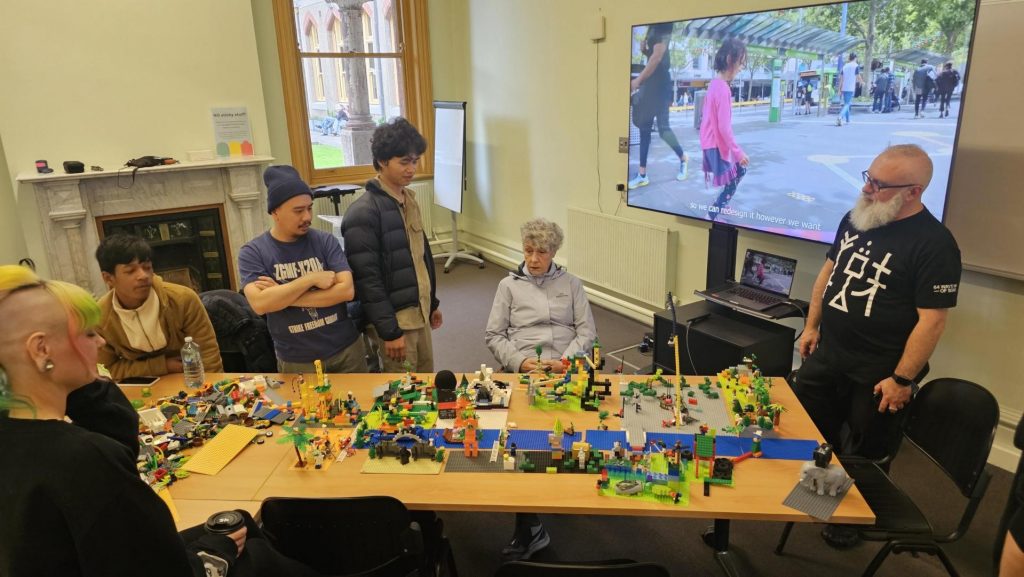
In mid-2024, the future play lab at RMIT piloted a workshop, called ‘Urban Commons’, to test out how we might co-design public spaces that reflect experiences of place with young LGBTIQA+ and First Nations people. Not everyone has equal access to public space, and many people, particularly those from minority groups, can feel excluded from, or ostracised in, public places that others might simply take for granted. Urban play can connect people through shared goals or friendly competition. But it can also be used to rethink and repurpose everyday objects, places and situations in the city, and to challenge or even transgress social and physical boundaries.
With this in mind, we sought to use creative and playful methods to explore how both young queer and First Nations people might reimagine and redesign urban spaces to reflect and accommodate their own distinctive experiences, needs and desires. These workshops were funded by a 2023-24 VicHealth JumpStart! grant, which helps to pilot projects that support young people’s health and wellbeing through arts, cultural and play-based activities.
In our original proposal, we planned to run a series of workshops inside the future play lab’s “playful parklet”, which has already travelled across Naarm/Melbourne hosting a series of interactive art installations, exhibitions, musical performances and augmented reality and tabletop games, as well as “urban play school” co-design workshops with RMIT students. These events have generally been open to the public and attempted to engage any passers-by. But we wanted to reimagine the parklet through queer and First Nations lenses by asking members of each of these communities to co-design content and programming for it. Ideally, a community organisation that supports young people from these communities would “host” the parklet outside one of their spaces and invite their members to participate.
After we received the funding we approached community organisations to co-run the workshops. However, it became clear that these organisations were hesitant about this idea because, reflecting its origins in DIY and temporary and tactical urbanism, the parklet is highly visible and disruptive when located in new spaces. While our playful parklet has received negative feedback from a handful of residents in the past, this has mostly been frustration over the temporary loss of two car parking spaces that the parklet occupies. But in this case, community groups were concerned that the parklet might attract unwanted or negative attention from hate groups and that their members may not feel safe inside it. This prompted us to rethink the workshops so that they were designed to be more safe and inclusive for members of these communities.
Rather than taking place inside a parklet, the workshops would be hosted in and around a community space. One workshop would focus on First Nations youth and involve walking on Country with Professor N’arwee’t Carolyn Briggs, Boon Wurrung Senior Elder. It would be followed by a discussion about how participants might use play to disrupt the Western, colonial design of urban space and reconnect with traditional ways of knowing and being in place. The second workshop by LGBTIQA+ community leader Professor Katherine Johnson would ask queer youth to use LEGO to design a small public space, modelled on the parklet, that they would feel comfortable and safe to play and connect in.
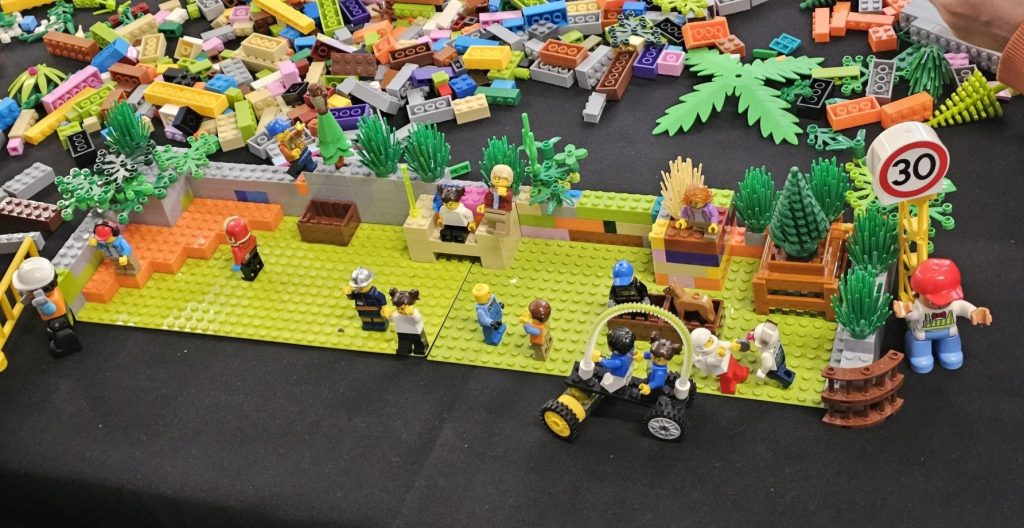
JumpStart! aims to support projects that test out ideas and implement them quickly, but with these delays and changes to the project we were over schedule and only had a short time left to organise, advertise and run the workshops. The first two workshops were held on the same day at Footscray Community Arts Centre and although we had 14 registrations…nobody showed up.
This was the result of a number of factors – not least the extremely wet and cold weather that day, but also especially a lack of time and capacity to build relationships with community organisations to help recruit participants from the particular groups we wanted to work with. The organisers discussed how the next two workshops – due to be held the following weekend – might be rethought to better attract participants. We combined them into one, shorter workshop, led jointly by Prof N’arwee’t Briggs and Prof Johnson, involving a short walk followed by a LEGO workshop and discussion, which would be open to anyone to participate. Rather than a structured program, we would simply ask participants to try out our methods and give us feedback on how we might better design the workshops in future.
The second workshop was held at Abbotsford Convent, a former convent redeveloped as an arts and cultural precinct. This time we had 10 registrations and 5 participants – although all were acquaintances or colleagues of the organisers – and better weather. We began with a walk around the Convent gardens with Prof N’arwee’t Briggs reflecting on its highly linear, controlled and commercialised design, despite its close proximity to the Birrarung (Yarra River), which had once been plentiful with birds, eels and fish. We then gathered in a meeting room full of LEGO and asked our participants to design a place that had meaning to them, inspired by their imaginations and our walk.
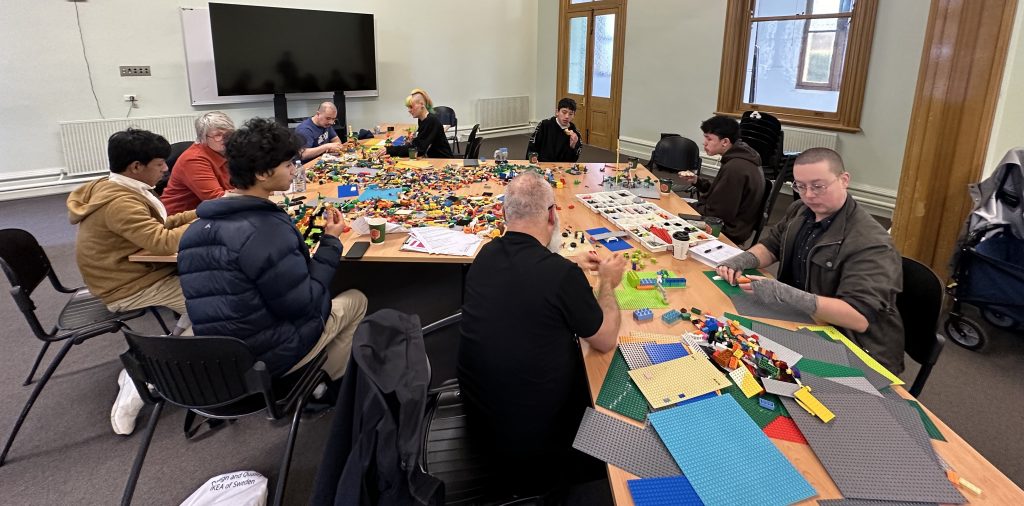
Our participants came up with an eclectic mix of spaces, ranging from deeply personal to more conceptual and allegorical. One (25, male, gay, Indonesian) designed a peaceful resting place for his pet cat, who had died when he was living in Indonesia and never received a proper burial. Another (29, male, queer, Indonesian) created the interior of an alien spaceship with himself at the control station, which he had “mastered” and which offered him a place where he felt “in control”. The spaceship, he explained, also had a cloaking ability so it could land in places without being seen – reflecting, perhaps, some of the tensions over “visibility” in public space that our project had grappled with.
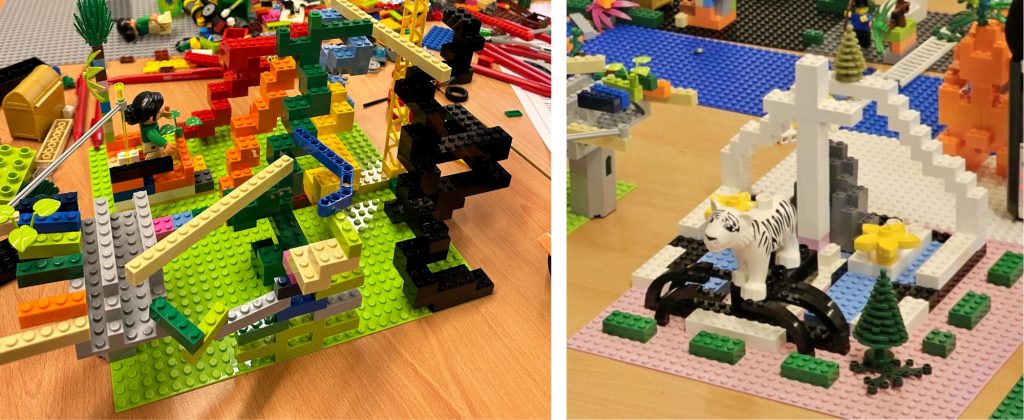
Two brothers of mixed Vietnamese and Māori descent, meanwhile, designed more conceptual and narrative-based structures. One (17) had crafted an elaborate Mad Max-inspired arena with a figure climbing to the top of a tall spiral that resembled an art sculpture he had seen online. The figure, he explained, was unaware that when they reached its peak someone else would spring a trap, launching a giant ball from a sling to bring the entire structure down, making their efforts futile.
His brother (13) created a smaller-scale installation depicting a helmeted figure, shovel raised threateningly, interrogating another figure handcuffed to a tree about the location of a hidden treasure. Yet the interrogator, our participant explained, was unaware that the treasure chest was located directly underneath them because he was too busy using violence and coercion to seek it out, rather than simply looking at the environment around him. Discussions with the boys and their father revealed that these installations were partly influenced by N’arwee’t’s comments about the history of the place we were in, and could potentially be read as allegories for capitalism and colonialism, respectively.
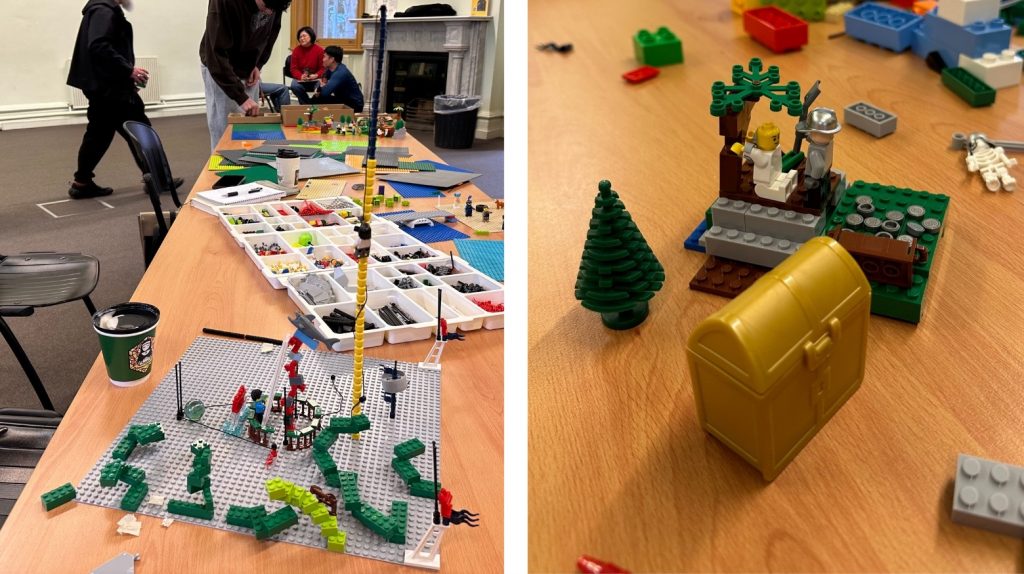
At the end of the workshop these LEGO sites were reassembled on one table to explore how they might come together as a neighbourhood. They joined various other sites that future play lab members had created, including more Mad Max-inspired hovercraft, a bridge with figures pursued by a Friday the 13th-esque chainsaw-wielding figure, a silent disco accommodating body-diverse revellers, the ruins of an attempted explorable space, and a replica of our playful parklet.
On its way to being carried over, the replica parklet was accidentally dropped and broke in half. When it was restored and placed amidst the other spaces, its semi-enclosed, angular design looked at odds with the more open and porous spaces that participants had created. Perhaps these were both omens that the more contained, “hard” infrastructure of parklets needed to give way to more permeable and community-embedded “soft” infrastructure that embraces freedom and malleability of identity and expression, as well as movement.
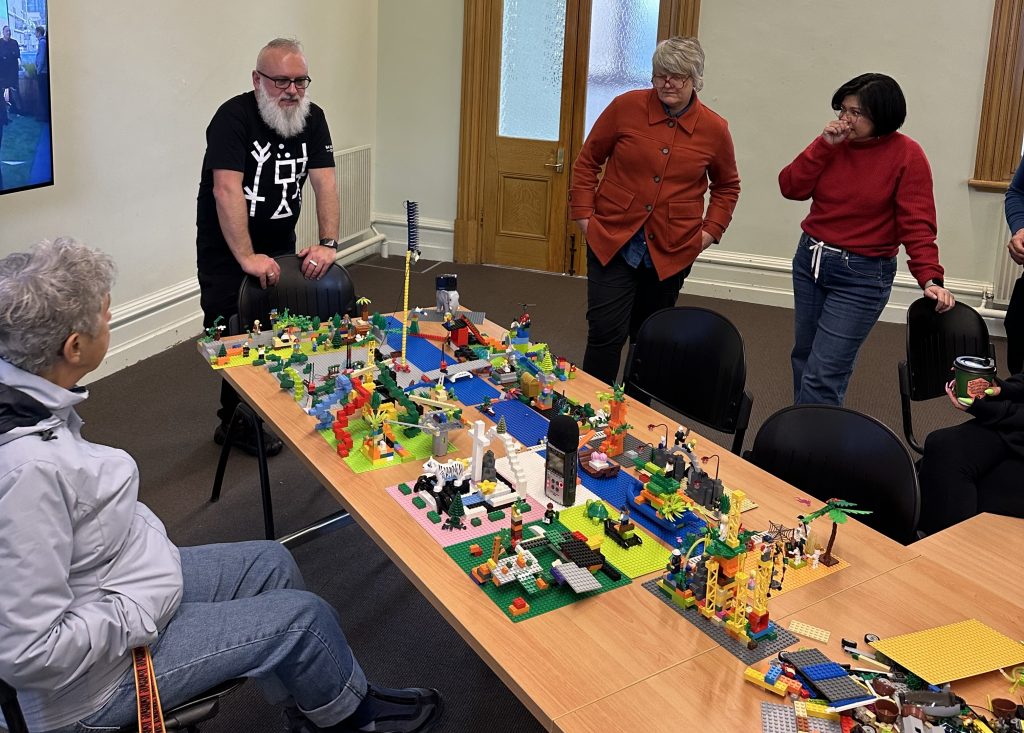
Workshop organisers (from left) Prof N’arwee’t Briggs, Dr Troy Innocent and Prof Katherine Johnson discuss connections between the participant-created sites. Photos by Carlo Tolentino. 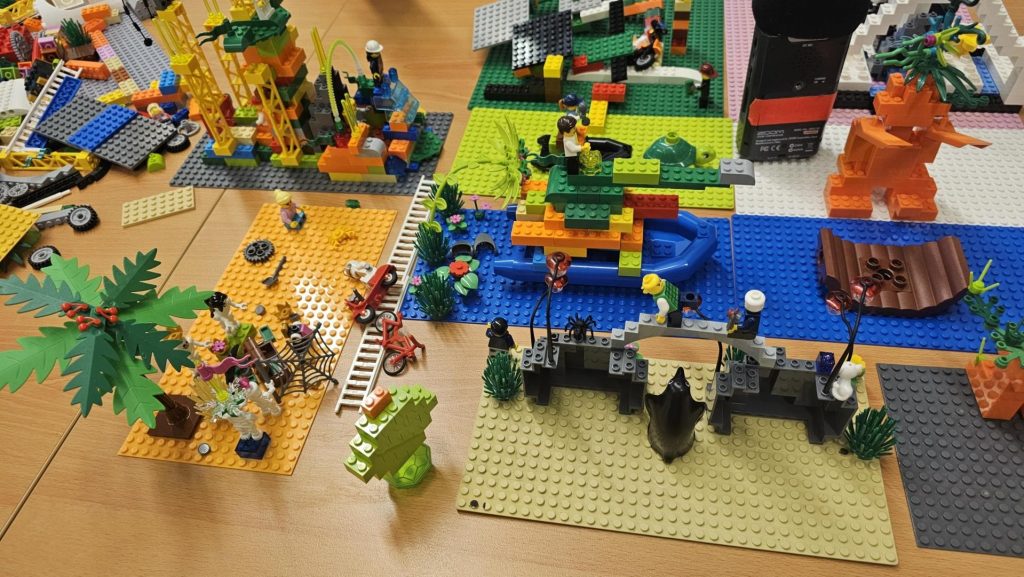
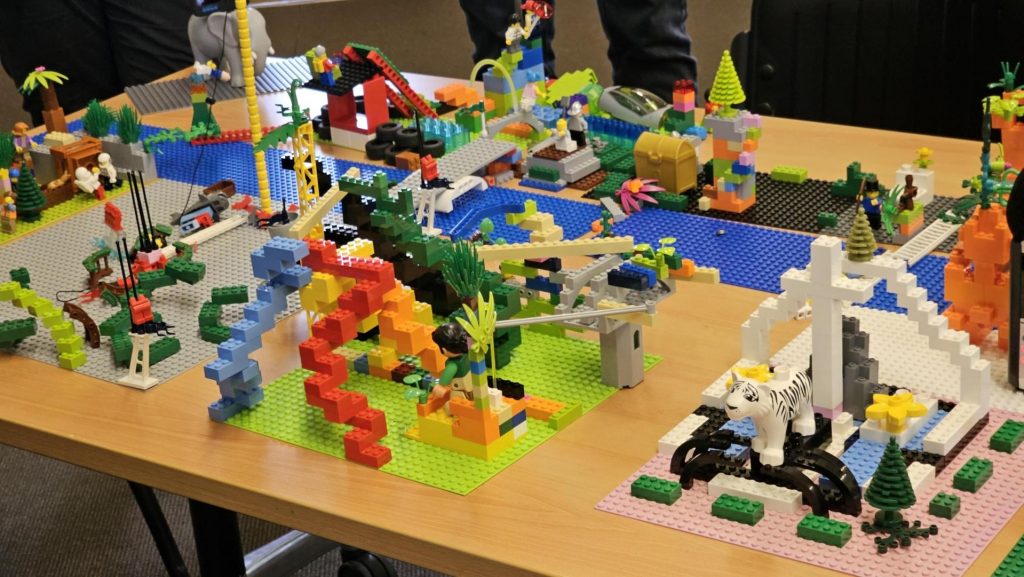
Dale Leorke is a postdoctoral research associate at the University of Sydney and a member of the Urban Play Network.
